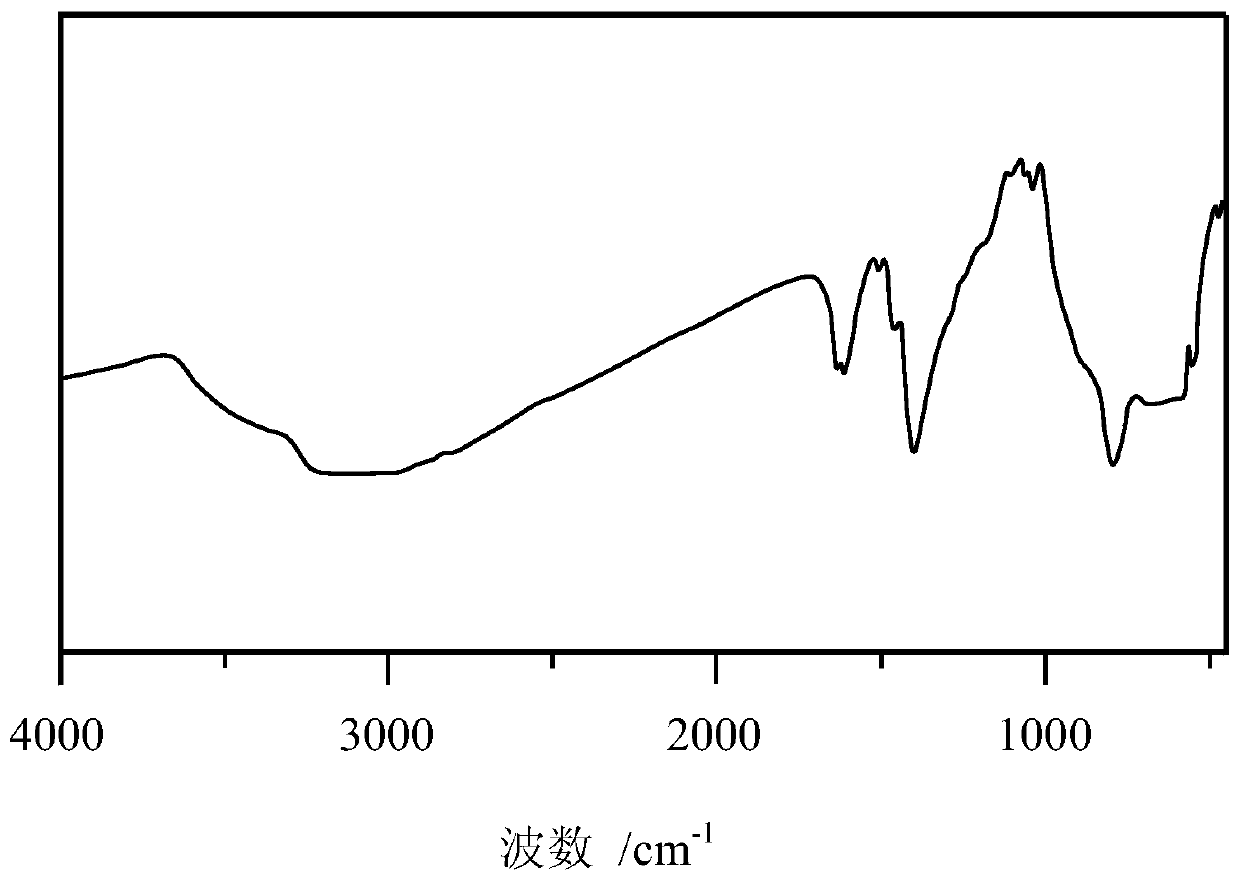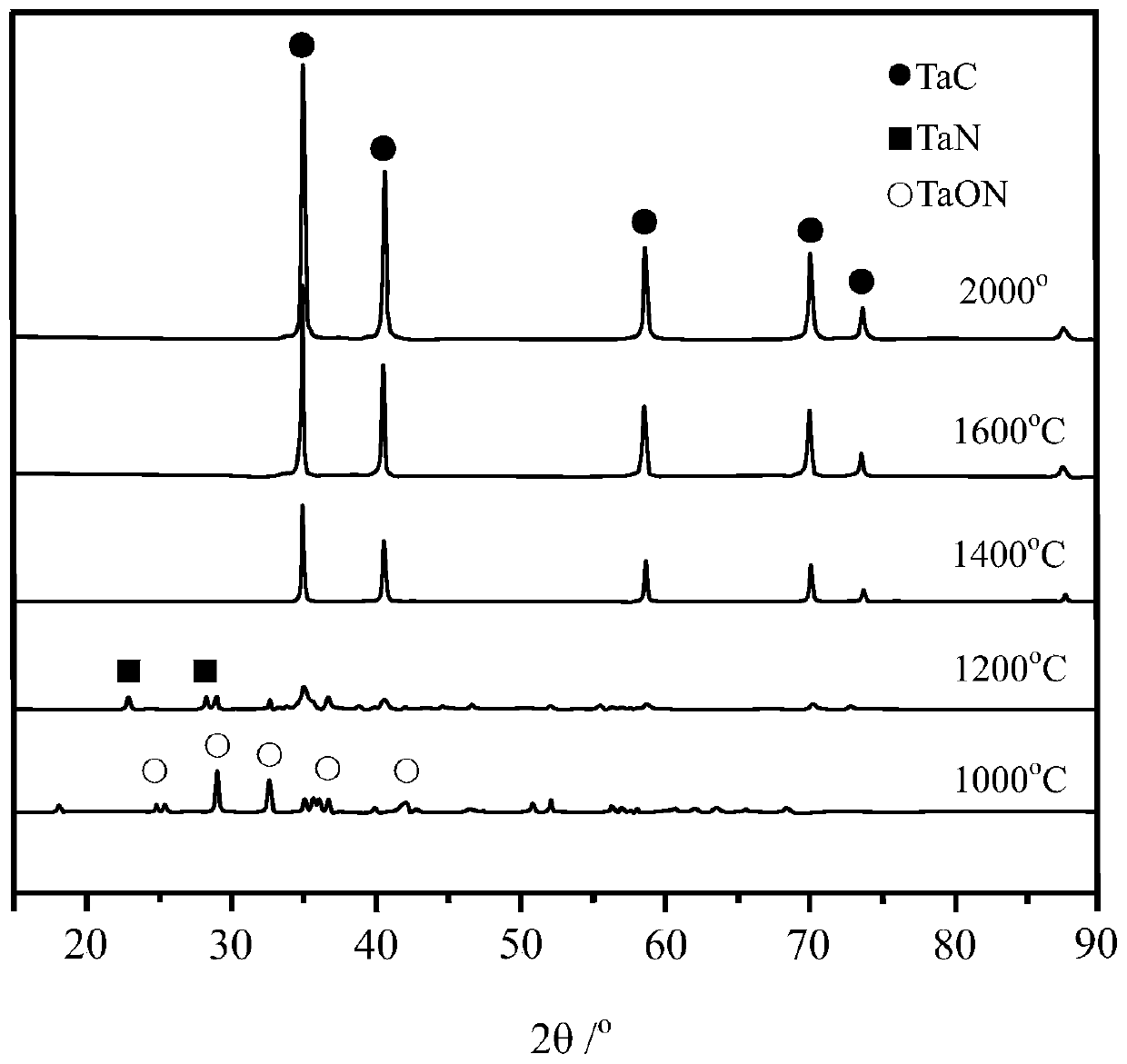Preparation method of tantalum carbide ceramic precursor
A ceramic precursor, tantalum carbide technology, applied in the field of tantalum carbide ceramics, can solve the problems of carbon fiber damage, affecting the mechanical properties and high temperature resistance of composite materials, and achieve the effect of reducing raw material costs, low cost and simple process
- Summary
- Abstract
- Description
- Claims
- Application Information
AI Technical Summary
Problems solved by technology
Method used
Image
Examples
Embodiment 1
[0031] In a high-purity argon environment, 17.925g (0.05mol) of tantalum source compound (TaCl 5 ) into the three-necked flask. Add 200mL triethylamine and 5.0g (0.05mol) N,N′-dimethylethylenediamide lithium (LiN(CH 3 )CH 2 CH 2 N(CH 3 ) Li), and fully stirred, reacted at room temperature for 2h. Add dropwise 3.45g (0.15mol) lithium amide (NH 2 Li), continue to stir, react 2h. After cooling, the precipitated LiCl was removed by filtration. The filtrate was heated to 320° C. in a high-purity nitrogen / argon environment, kept for 1 hour, and cooled to obtain a black, brittle tantalum carbide precursor with a synthesis yield of 52.6%.
[0032] Result analysis: measure the thermogravimetric curve, infrared spectrogram, X-ray diffraction spectrogram of embodiment 1 gained product respectively by existing method, gained result is listed in Figure 1~3 middle.
[0033] figure 1 It is the infrared spectrogram (FT IR) of the tantalum carbide precursor obtained in Example 1. A...
Embodiment 2
[0037] In a high-purity argon environment, 14.5g (0.025mol) of tantalum source compound (TaBr 5 ) into the three-necked flask. 200mL triethylamine and 3.845g (0.025mol) N,N'-dimethyl 1,4-cyclohexanediamide lithium (C 8 h 16 N 2 Li 2 ), and fully stirred, reacted at room temperature for 3h. Add dropwise 1.725g (0.075mol) lithium amide (NH 2 Li), continued to stir, and reacted for 1h. After cooling, the LiBr precipitate was removed by filtration. The filtrate was heated to 300° C. in a high-purity nitrogen / argon environment, kept for 1 hour, and cooled to obtain a black, brittle tantalum carbide precursor with a synthesis yield of 50.2%. The ceramic yield of the obtained precursor at 1000 °C is about 69.4%.
Embodiment 3
[0039] The difference from Example 1 is: stirring for 1 hour, adding lithium amide dropwise, continuing to stir, reacting for 4 hours, raising the temperature of the reaction system to 350°C, and keeping it warm for 0.5 hours;
[0040] The tantalum source compound, lithium polyamide compound and lithium amide are mixed according to the molar ratio of Ta-X bond to lithium polyamide compound being 1:1, and the molar ratio of Ta-X bond to lithium amidide being 1:3. The tantalum source compound is TaI 5 . The synthesis yield was 46.3%. The ceramic yield of the obtained precursor at 1000 °C is about 67.8%.
PUM
 Login to View More
Login to View More Abstract
Description
Claims
Application Information
 Login to View More
Login to View More - R&D
- Intellectual Property
- Life Sciences
- Materials
- Tech Scout
- Unparalleled Data Quality
- Higher Quality Content
- 60% Fewer Hallucinations
Browse by: Latest US Patents, China's latest patents, Technical Efficacy Thesaurus, Application Domain, Technology Topic, Popular Technical Reports.
© 2025 PatSnap. All rights reserved.Legal|Privacy policy|Modern Slavery Act Transparency Statement|Sitemap|About US| Contact US: help@patsnap.com



